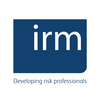In the dynamic landscape of modern business, mastering enterprise risk management (ERM) is not just a best practice; it's a strategic imperative. While the basics of risk management are essential, this exploration delves into advanced techniques and practices in enterprise risk assessment to elevate governance to a level of robustness that can withstand the complexities of today's business environment.
Understanding the Essence of Enterprise Risk Management (ERM)
Enterprise Risk Management is a comprehensive approach that encompasses the identification, assessment, and mitigation of risks across an entire organization. It goes beyond siloed risk management efforts and aims to create a unified framework that aligns risk management with strategic objectives.
The Foundations: Basic Elements of ERM
Before delving into advanced techniques, it's crucial to revisit the fundamental elements of ERM:
-
Risk Identification:
-
A systematic process of recognizing potential risks that could impact the achievement of organizational objectives.
-
Risk Assessment:
-
Evaluating the significance and likelihood of identified risks to prioritize them for mitigation strategies.
-
Risk Mitigation:
-
Developing strategies and actions to minimize or eliminate the impact of identified risks.
-
Monitoring and Reporting:
-
Establishing a continuous process of monitoring and reporting to ensure that risk mitigation strategies remain effective and aligned with organizational goals.
Advanced Techniques in Enterprise Risk Assessment
1. Scenario Analysis:
-
Objective:
-
To understand how different future scenarios might impact the organization.
-
Practice:
-
Develop and analyze various scenarios, considering factors such as economic changes, geopolitical events, and technological disruptions. Assess the impact of each scenario on organizational objectives.
2. Key Risk Indicators (KRIs):
-
Objective:
-
To proactively monitor specific indicators that signal potential risks.
-
Practice:
-
Identify and track key risk indicators that are precursors to potential risks. Establish thresholds for these indicators, and trigger timely responses when thresholds are breached.
3. Bayesian Probability Analysis:
-
Objective:
-
To refine risk assessments by incorporating updated information and adjusting probabilities.
-
Practice:
-
Utilize Bayesian probability theory to continuously update risk assessments based on new data and information. This allows for a more dynamic and responsive risk management approach.
4. Black Swan Analysis:
-
Objective:
-
To anticipate and prepare for rare, high-impact events.
-
Practice:
-
Identify and analyze potential "black swan" events—extremely rare and unpredictable occurrences with significant consequences. Develop contingency plans to mitigate the impact if such events occur.
5. Risk Heat Maps with Correlation Analysis:
-
Objective:
-
To visualize the interdependencies between different risks.
-
Practice:
-
Create risk heat maps that not only display the severity of individual risks but also highlight correlations between different risks. This aids in understanding how the occurrence of one risk might influence others.
Practices for Robust Governance Through Advanced ERM
1. Board-Level Involvement:
-
Elevate ERM discussions to the board level. Ensure that the board actively participates in risk assessments and understands the strategic implications of different risk scenarios.
2. Integration with Strategy:
-
Align ERM with strategic planning. Integrate risk assessments into the strategic decision-making process to ensure that risk management is not a separate activity but an integral part of organizational strategy.
3. Continuous Training and Awareness:
-
Regularly train employees at all levels about advanced risk management techniques. Foster a culture of risk awareness where employees are not just risk-averse but are actively engaged in identifying and managing risks.
4. Technology Integration:
-
Leverage advanced technologies such as artificial intelligence and data analytics to enhance the efficiency and effectiveness of risk assessments. Use predictive analytics to identify emerging risks and opportunities.
5. Dynamic Risk Reporting:
-
Move beyond static risk reports. Implement dynamic reporting mechanisms that provide real-time insights into the evolving risk landscape. Use interactive dashboards that allow stakeholders to explore and understand risk data intuitively.
Conclusion: Elevating Governance Through Advanced ERM
In an era of unprecedented complexity and uncertainty, mastering enterprise risk management is a strategic imperative for organizations aiming not just for survival but for sustainable growth. By embracing advanced techniques in enterprise risk management assessment and aligning risk management with strategic goals, organizations can fortify their governance structures and navigate the intricate landscape of risks with resilience and agility. It's not just about managing risks; it's about transforming risks into opportunities for innovation and strategic advantage.

No comments yet